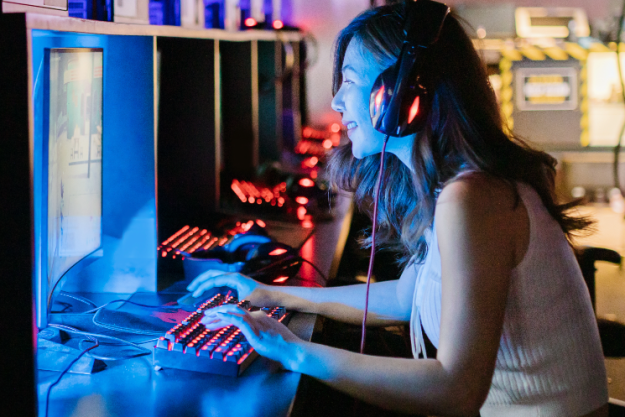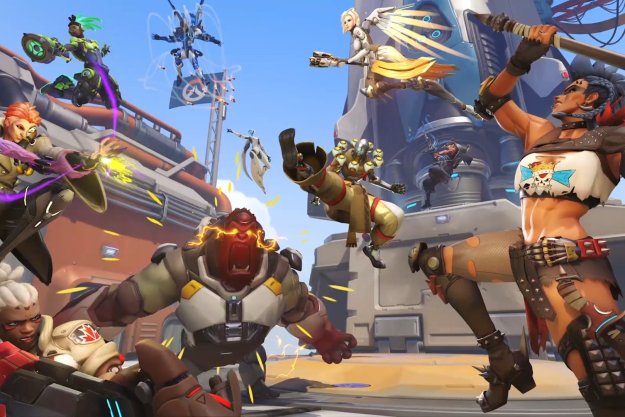Physical game media is on its way out. Like it or not, it no longer makes financial sense for publishers and distributors to continue producing physical discs and cartridges. Distribution over the internet is less expensive and, for gamers, often more convenient.
The move to an all-digital future has its perks. But it ignores a small, passionate group of players who don’t choose physical media because it’s the easier or faster option, but because they like having the box on the shelf.
While game collections are becoming virtual, collectors aren’t abandoning their shelves. In the boxes’ place is plastic, rubber, metal, and plush — representations of our favorite franchises. Video game memorabilia stands as the best way to show passion as a fan, and serves as an evergreen display that no one can delete or uninstall.
Master Chief, meet plastic Chief
My personal game fandom, and subsequent memorabilia collecting, started with Halo. At the age of seven, my neighbors invited my family over to their house to see the original Xbox for the first time. Up to that point, my time with video games had been reserved to Super Mario 64 and the newest Pokémon games. The chance to blow up my friends with grenades and save the universe from an alien invasion was, at the time, mind-blowing, and Halo‘s popularity coincided with my own transition from child to young man.
In 2013, Martin was awarded the Guinness World Record for his memorabilia, which at that point totaled 8,030 pieces.
I knew I’d be picking it up Halo 3 on launch day, but when I did, the clerk at the store told me about something any true Halo fan had to own. The “Legendary Edition,” complete with a replica Master Chief helmet — the perfect way to show your series loyalty to anyone who walked through the door. I was sold. The collector’s edition was the perfect embodiment of my love for the franchise.
But why stop at Halo? After Bioshock Infinite launched and became my favorite video game of all time, I realized that I had missed out on the game’s collector’s edition, complete with an enormous statue of Songbird. Knowing full well that I was going to pay way more than the statue was worth, I tracked one down, and it certainly cut into my budget for buying actual, playable video games.
Ubisoft’s many franchises were also given the PVC treatment, with figurines of Sam Fisher and Edward Kenway among my very best pieces. And long after I had stopped playing the games they represented, they still sat on my desk as a constant reminder of the fun I’d had.
Decades of history
I’m far from alone in my love of video game memorabilia. Compared to “Video Game Memorabilia Museum” creator Brett Martin, my collection of figurines and other shelf-fillers is downright puny. In 2013, Martin was awarded the Guinness World Record for his collection, which at that point totaled 8,030 pieces of memorabilia. He attributed his initial interest in game merchandise to a gift his parents gave him as a child — a plastic Mario figure.
“I have collected a lot of things in my life, but none as passionately as video game memorabilia,” Martin says. “I loved the Nintendo characters and tried to find something that I could play with when I didn’t have control of the TV.”
The late 80s, which saw a rise in Nintendo-related merchandise at the height of the NES era, were an especially important time to be a collector. In 1989, the year Martin started his collection, Nintendo partnered with McDonald’s to release Super Mario Bros 3 toys for Mario, Luigi, a Goomba, and a Koopa. The toys, given away with Happy Meals, were as flimsy as you’d expect, with Mario simply standing on a small spring and the Koopa leashed to an air bladder that moves his legs. But they’re still in demand, with the hopping Mario toys going for $20 from resellers.
By the early 2000s, the market for video game collectibles began to dry up. Martin attributes it to a lack in widely available, for-sale merchandise, and fewer promotional items. He says collectors have suffered due to poor distribution by third-party manufacturers. Jakks Pacific, for example, has dozens of “World of Nintendo” items available, including Wind Waker’s Ganondorf, Metroid, Fox McCloud, a yellow Pikmin, and a Mario Kart “anti gravity” RC car. But though many of the items were introduced only a year ago, they’re considered “new rare” — difficult to obtain almost immediately after release.
The newest obsession
Nintendo’s own runaway toys-to-life series, Amiibo, has experienced massive shortages of particular figures, leading to inflated prices on websites like Amazon. But this phenomenon is far from a distribution problem.
Nintendo’s own runaway toys-to-life series, amiibo, has also seen massive shortages in particular figures.
Fans pre-ordered their favorites prior to their launch because they were eager to finally have a physical piece of those franchises to hold in their hands. If you weren’t devoted enough to put your cash down ahead of time, it could take months to see them return to shelves. Others, at least in North America, never have. After struggling to find Ness and Pit for months on end, I finally received them as a gift this week — imported from Japan.
Why wait?
Though video game critic Matt Paprocki has a sizeable collection of video game memorabilia himself, including more than 200 action figures, pinball machines, and display boxes, he urges fans to exercise some restraint, especially in regard to the collector’s edition figurines that often accompany the year’s largest AAA releases.
“There’s a reason collector’s editions drop in price so rapidly,” Paprocki says. “I have two of the big Halo box sets and I don’t think I paid more than $20 for either three or four months after release.”
Just this month, Microsoft dropped the price of Halo 5’s limited edition — complete with a buildable Metal Earth model and a classified dossier — from $100 to $35. It sold out almost immediately, and this is far from an isolated incident. But don’t expect fans to wait eight months before pulling the trigger. Video game marketing makes the wait nearly unbearable, and more often than not, having that new item now, and being one of the few to own it, can be more important to collectors than getting the best deal.
“No one lined up outside of stores for any of the Nintendo figures prior [to amiibo],” Paprocki adds. “Amiibo was brilliant marketing and their fervent following a rather dismal commentary on the state of geeky consumerism.”
But in today’s age of DLC, game licensing, and mandatory internet connectivity, there’s something soothing about putting the newest piece of plastic on your shelf. It’s yours. It’s not going anywhere. And it proves your fandom, for all the world to see.
Editors' Recommendations
- Baldur’s Gate 3 makes gaming’s most complex genre more player-friendly than ever
- Silent Hill, Bioshock, and 4 more video game revivals we might see in 2022
- Gaming is more popular than ever due to coronavirus




